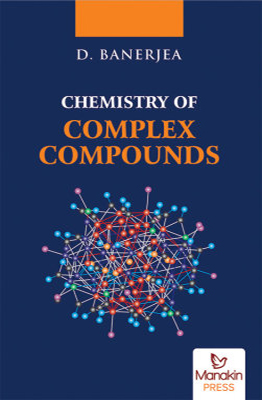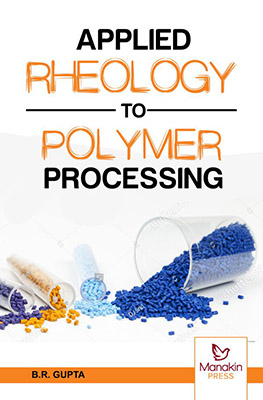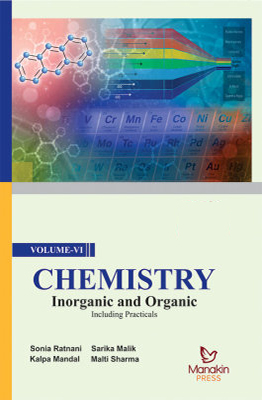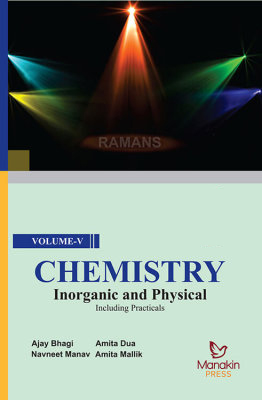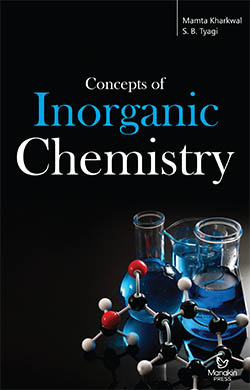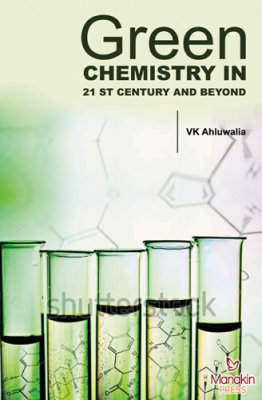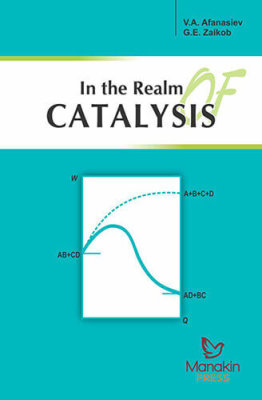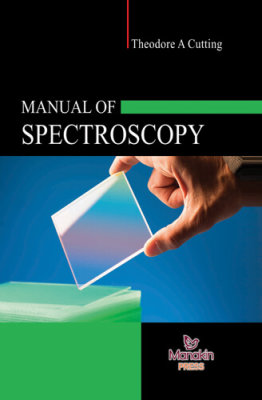 D. Banerjea | Category: Chemistry
D. Banerjea | Category: Chemistry
Book Details
ISBN: 9789386677396
YOP: 2018
Pages: 1200
Order also on
This is a treatise on important aspects of chemistry of coordination complexes (discussed in chapters 3 and 4) and of the related organometallic compounds (discussed in chapter 5) – their nature, bonding, structures, properties, reactions and applications covered systematically. Knowledge on the nature of chemical bond is essential for understanding the formation and properties of such compounds and this in turn requires knowledge of the electronic configurations of elements; hence these are discussed in the first two chapters. Metal complexes have a major role in biological systems and this is discussed in chapter 7, while chapter 6 is on mixed ligand complexes which are of relevance to metalloenzme catalysed reactions in biological systems that involve metralloenzyme-substrate intermediates that are typical mixed ligand (ternary) complexes. Hence, knowledge of the factors governing the stabilities and labilities of such species are of importance and these are covered in chapter-6. Dynamic and mechanistic aspects of reactions of metal complexes are discussed in chapter 8 and photochemical reactions of metal complexes are discussed in chapter 9. These topics adequately cover considerable part of the advance courses in inorganic chemistry prescribed in the university curricula.
Chapter 1. Atomic Structure and Atomic Spectra
Chapter 2. Chemical Bond
Chapter 3. Coordination Compounds:I
Chapter 4. Coordination Compounds:II
Chapter 5. Chemistry of Organometallic and Rated Compounds
Chapter 6. Mixed Ligand Complexes
Chapter 7. Role of Metal Ions, Metal Complexes and Other Inorganic Species in Biological System
Chapter 8. Mechanisms of Reactions of Metal Complexes and of Organometallic Compounds
Chapter 9. Photochemical Reactions of Metal Complexes
This is a treatise on important aspects of chemistry of coordination complexes (discussed in chapters 3 and 4) and of the related organometallic compounds (discussed in chapter 5) – their nature, bonding, structures, properties, reactions and applications covered systematically. Knowledge on the nature of chemical bond is essential for understanding the formation and properties of such compounds and this in turn requires knowledge of the electronic configurations of elements; hence these are discussed in the first two chapters. Metal complexes have a major role in biological systems and this is discussed in chapter 7, while chapter 6 is on mixed ligand complexes which are of relevance to metalloenzme catalysed reactions in biological systems that involve metralloenzyme-substrate intermediates that are typical mixed ligand (ternary) complexes. Hence, knowledge of the factors governing the stabilities and labilities of such species are of importance and these are covered in chapter-6. Dynamic and mechanistic aspects of reactions of metal complexes are discussed in chapter 8 and photochemical reactions of metal complexes are discussed in chapter 9. These topics adequately cover considerable part of the advance courses in inorganic chemistry prescribed in the university curricula.
Chapter 1. Atomic Structure and Atomic Spectra
Chapter 2. Chemical Bond
Chapter 3. Coordination Compounds:I
Chapter 4. Coordination Compounds:II
Chapter 5. Chemistry of Organometallic and Rated Compounds
Chapter 6. Mixed Ligand Complexes
Chapter 7. Role of Metal Ions, Metal Complexes and Other Inorganic Species in Biological System
Chapter 8. Mechanisms of Reactions of Metal Complexes and of Organometallic Compounds
Chapter 9. Photochemical Reactions of Metal Complexes
| Weight | 2.62 kg |
|---|---|
| Dimensions | 25.4 × 19 × 7.2 cm |
| yop |
2018 |
| subject-category |
Chemistry |
| isbn |
9789386677396 |

